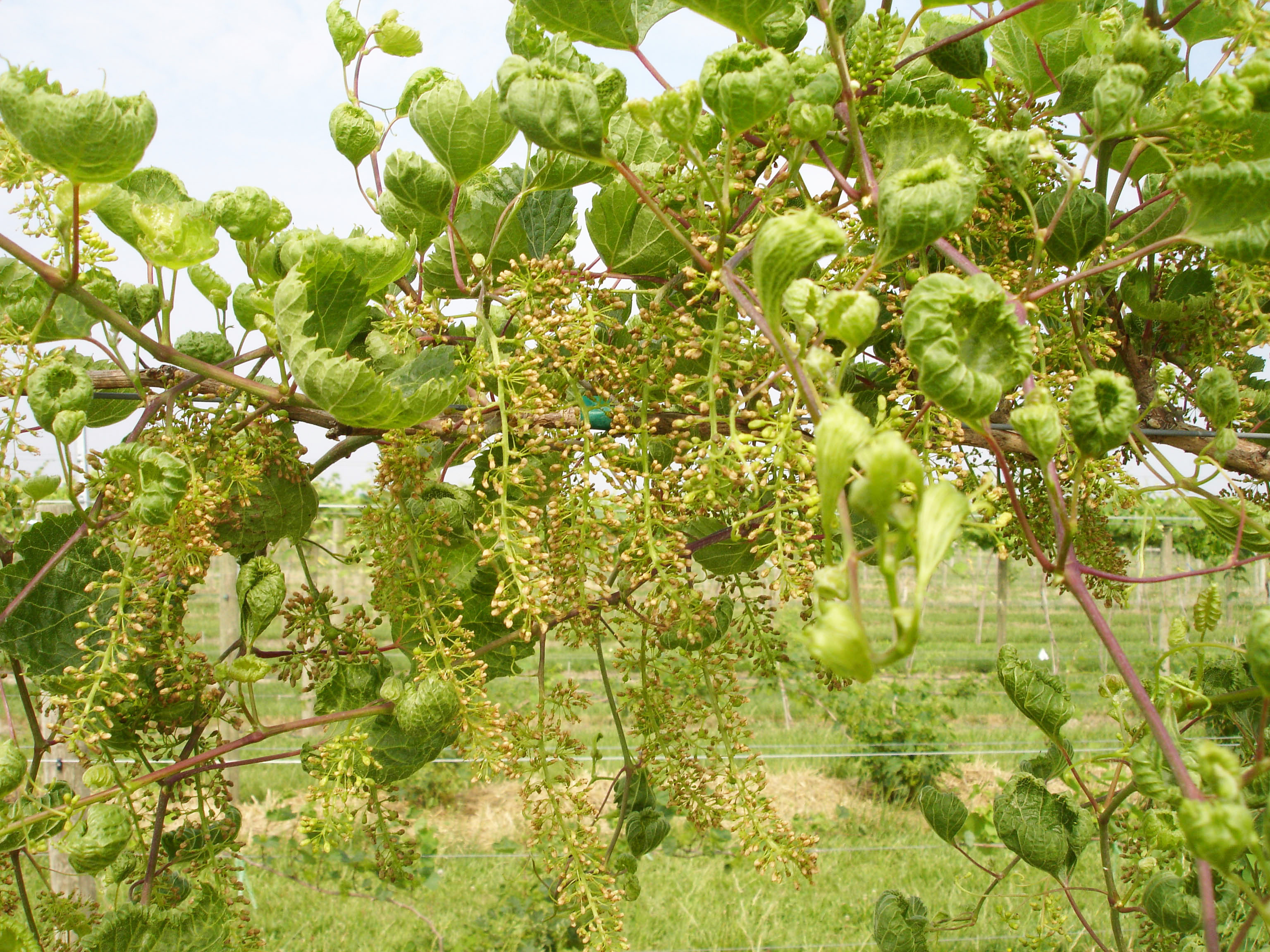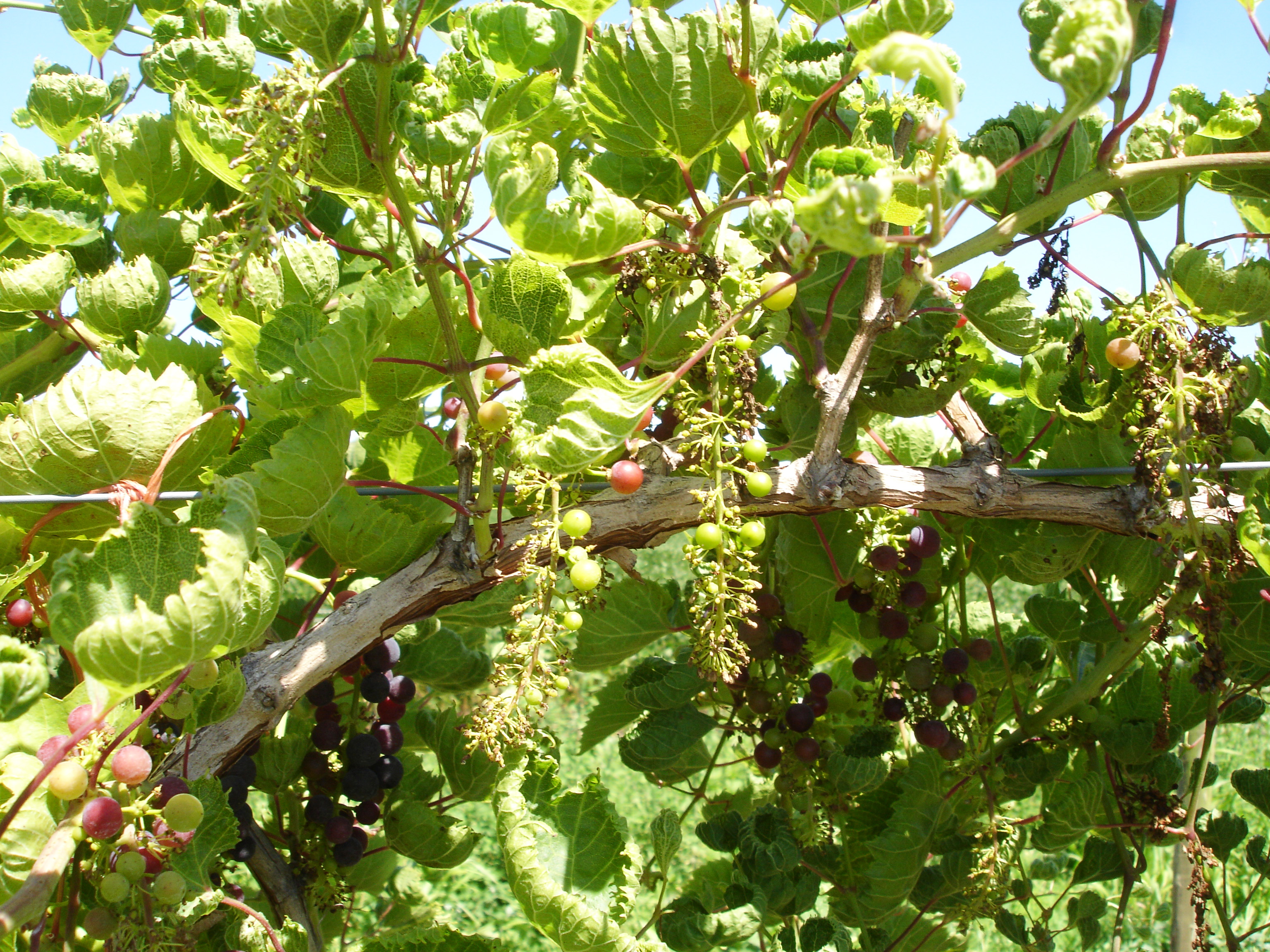Dicamba Injury on Grape
Return to Abiotic Disorders
Dicamba herbicide injury symptoms include reduced leaf size, upward leaf cupping, delayed fruit ripening, and cessation of cane terminal growth (and subsequently, lack of lateral growth), often over entire vines. Fruit fail to set if exposure occurs during bloom. Symptoms are typically not uniform across a vineyard; individual plants or small groups of plants may show symptoms while adjacent plants may appear unaffected. Damage typically does not carry over to the following year. Frequency of injury has risen with increased dicamba use (to control glyphosate-resistant weeds in dicamba-tolerant soybeans). Some grape cultivars (e.g., ‘Aromella,’ ‘Edelweiss,’ ‘Fredonia,’ and ‘Niagara’) are very sensitive, while others (e.g., ‘Chambourcin,’ ‘Marquet,’ and ‘Vignoles’ ) are moderately resistant.

Dicamba injury to grape foliage.
(Photo: John Strang, University of Kentucky)

Reduced fruit set due to dicamba.
(Photo: John Strang, University of Kentucky)
Management:
- Communicate with nearby growers (e.g., soybean growers) to request their cooperation when they are making dicamba applications.
